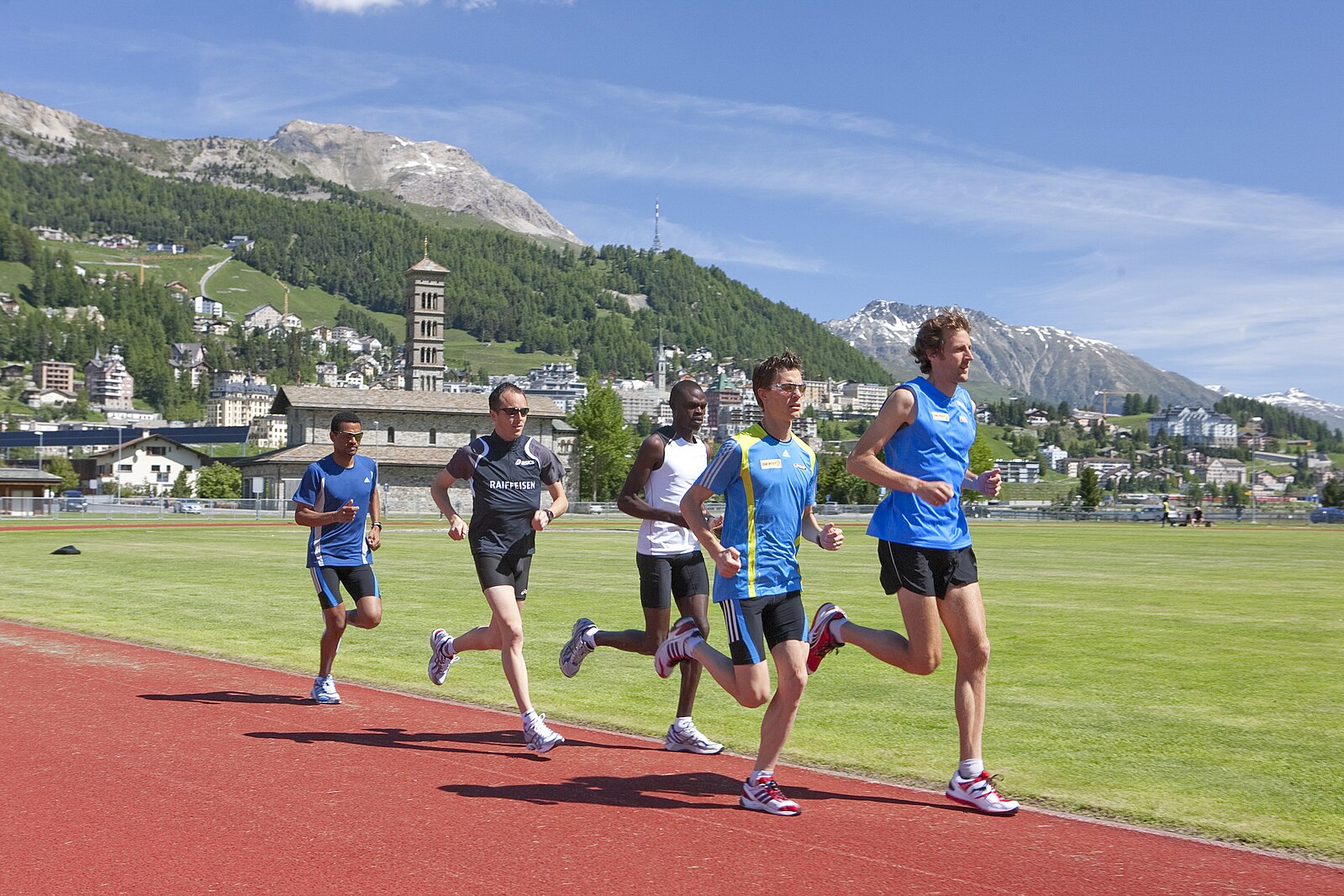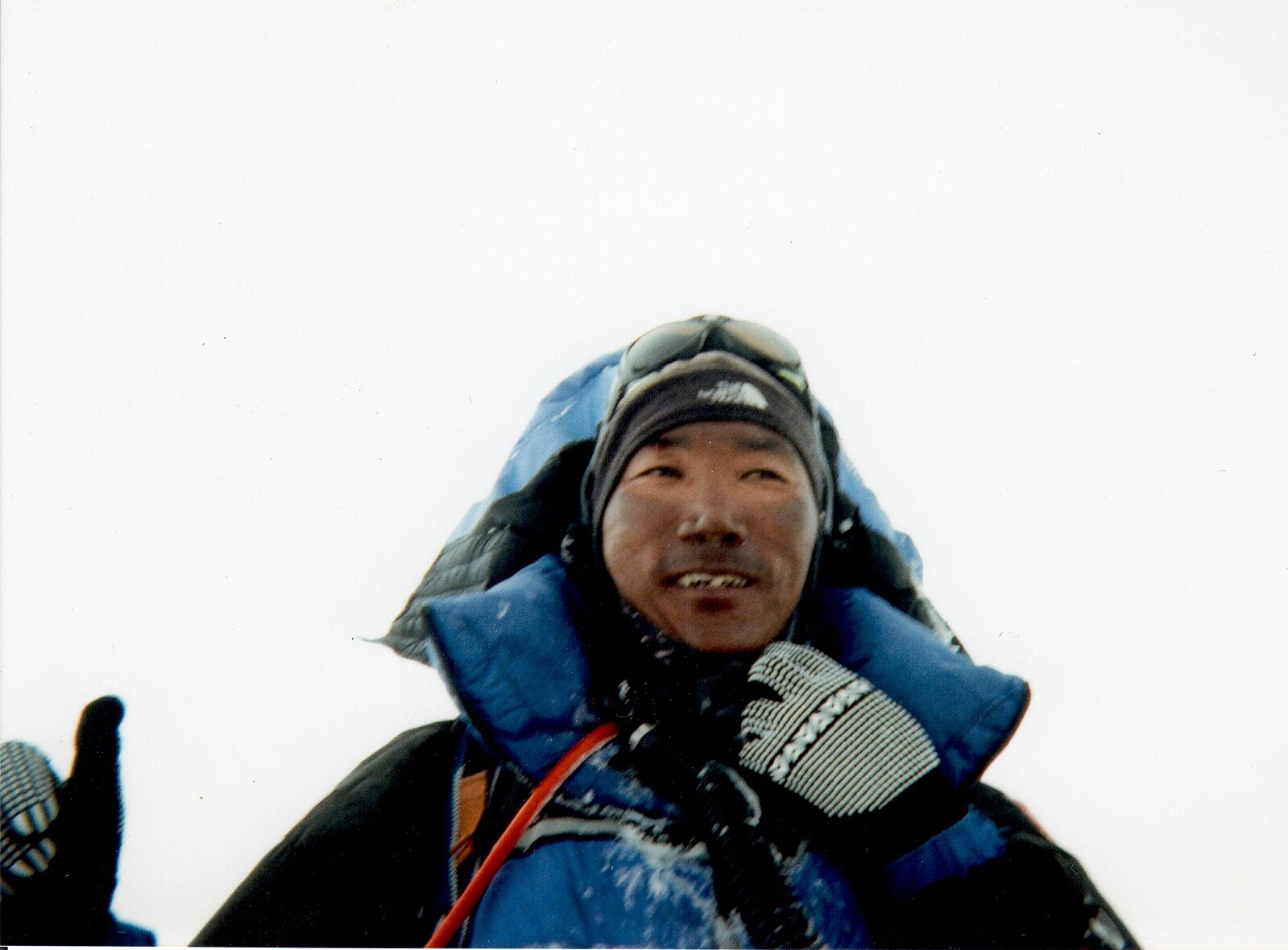9.5 Metabolism at High Altitude
Christelle Sabatier and Hannah Nelson
Learning Objectives
By the end of this section, you will be able to do the following:
- Predict how oxygen limiting conditions impacts organismal metabolic rate.
- Predict the impact of environmental changes (e.g., change in altitude) on metabolic rate.
- Distinguish between acclimation and adaptation.
At high elevations, air is thinner than at low elevations. This means there is lower oxygen availability at high elevation, which hinders energy production for respiring organisms. To accommodate this, when mountain climbing to high altitudes professional climbers use equipment like oxygen tanks and travel slowly with guides. These guides from high elevation regions often have the evolutionary advantage of specialized metabolisms that allow them to more efficiently breathe and create energy. In this case study, we’ll explore what might happen to the physiology of individuals who must function at high altitudes.
Acclimation or Acclimatization
Individual who transition from substantially low to high altitudes, will acclimate to the low oxygen availability. During this process of temporary adjustment, the body will undergo physical changes to temporarily accommodate for reduced oxygen availability. Within the first few hours, an increase in heart and breathing rate are present to accommodate for less oxygen available. Over days to weeks following elevation change, the production of red blood cells increase, as well as capillary density. This helps transport and utilize oxygen. The body also compensates for rising pH that occurs from hyperventilation, the body excretes increased water and bicarbonate via the kidneys.
Case Study: Athlete Training at Altitude
Athletes train at both high and low altitudes to gain a functional advantage. In higher altitudes, athletes who wish to improve their cardiovascular fitness over competitors can increase their oxygen carrying capacity. With more hours of cardiovascular exercise in the low oxygen conditions at high altitude locations, the amount of hemoglobin produced increases. Hemoglobin is the oxygen carrying protein that is found in red blood cells. This is primarily achieved through an increased production of red blood cells in the bone marrow. Before acclimating to their new altitude, athletes first experience increased activity in their sympathetic nervous system: elevated heart rate, cardiac output, and blood pressure. Some competitors may be at higher risk for altitude related illnesses. The likelihood of this occurring in a human increases with faster ascents, more aggressive exertion, increased heat, and elevated UV.

Evolution
Unlike acclimation, which is a temporary and reversible change in physiology in response to environmental changes, evolution can lead to permanent adaptations to a low oxygen environment. Scientists have studied these changes in distinct populations of people and other animals who have lived at high altitude for many generations. They are geographically located in Himalayan regions of Nepal, the high plateau of Ethiopia and the Andes mountains in Peru and Chile. These individuals present with mitochondrial changes which increase efficiency of energy conversion.
Survival on the Tibetan Plateau
Humans were first present on the Tibetan Plateau around 30,000 years ago at an altitude of 4,500 meters. Later permanent settlements in this same area by humans began 6,000 to 9,000 years ago. The Sherpa population migrated from Tibet to the mountains of eastern Nepal approximately 500 years ago. These individuals speak Sherpa, a native language similar to Tibetan, and one also spoken in Tibetan monasteries. With increased frequency of living in the mountains overtime, Sherpas evolved their metabolism to adapt to hypoxia at high altitudes.

54-year-old Kami Rita holds the record for most completed trips up and down Mount Everest at 30 endeavors. First climbing the mountain in 1994, Rita has since attempted and successfully completed at least one trip a year—aside from the three years when the mountain was closed. His father introduced him to the climb and was one of the first Sherpas to ever guide non-native climbers up the mountain.
When the biology of Sherpa populations was studied, scientists were surprised to notice that they did not have a higher red blood cell count on average than someone whose family history was at lower altitude. This might actually be an advantage as higher levels of red blood cells leads to a thickening of the blood that is associated with adverse events such as strokes. Instead, scientists discovered a differentiated cellular metabolism that allowed for more efficient use of oxygen in energy production. Although we often think about cellular respiration as starting with carbohydrates or glucose, it can also use fats as a reactant. Fats are metabolized into fatty acids, or long chains of hydrocarbons, which are then broken down through the process of fatty acid oxidation into the 2-carbon molecule acetate. When given a choice between burning fat or carbohydrate to make energy, it turns out that burning carbohydrates requires less oxygen than burning fat. Muscle cell biopsies from Sherpas taken indicated that there was a lower capacity for fatty acid oxidation in the population as compared to individuals that live closer to sea level, or “lowlanders.” Researchers found that individuals with Sherpa ancestry could more efficiently use oxygen as a result for this preference for burning carbohydrates.
When examining cellular content, Sherpas possessed less mitochondrial density than lowlanders, but improved coupling efficiency for the process of oxidative phosphorylation for ATP production. More energy is produced with fewer mitochondria. It was also noted in blood testing that Sherpa populations possess higher levels of phosphocreatine, a phosphate energy reserve found in muscle cells that allows for a quick regeneration of ATP from ADP without needing oxygen. Such an adaptation facilitates proper muscle function in low oxygen conditions.
You will learn more about the details of cellular respiration and how it can harness the energy in the carbon-carbon bonds of glucose and fatty acids in the next chapter.
Practice Questions
Glossary
acclimation
temporary and reversible change in physiology in response to a change in environment
adaptation
permanent change in physiology that occurs as a result of evolution over multiple generations to adapt to a certain environment
Reference
Horscroft, J. A., Kotwica, A. O., Laner, V., West, J. A., Hennis, P. J., Levett, D. Z. H., Howard, D. J., et al. (2017). Metabolic Basis to Sherpa Altitude Adaptation. Proceedings of the National Academy of Sciences of the United States of America, 114(24):6382–6387.
Figure Descriptions
Figure 9.5.1. The image depicts five runners on a red track, surrounded by a lush green field. They are running on a bright sunny day with a clear blue sky overhead. Behind them lies a picturesque backdrop of green hills and snow-capped mountains, dotted with buildings and a notable tall, square tower structure in the center. The runners are in various athletic outfits, primarily blue and black. The scene is set during a training session in the Swiss Alps. [Return to Figure 9.5.1]
Figure 9.5.2. The image shows Kamir Rita dressed in winter mountaineering gear against a white background, suggesting snowy or icy conditions. They are wearing a blue down jacket with a black hood and a gray beanie. Snow goggles rest on their forehead. Their face shows signs of exposure to cold, and they are smiling. Kamir Rita has a patterned glove on one hand, which is visible in front of them. A red strap is also partially visible across the jacket. [Return to Figure 9.5.2]
Media Attributions
- Swiss_Olympic_training_base © Christof Sonderegger von Photoplus.ch is licensed under a CC BY (Attribution) license
- Kami_Rita_Sherpa_Mt_Everest_Summit_May_2010 © Wikemedia Commons adapted by Vlvescovo is licensed under a CC BY (Attribution) license
Height above or below a reference point
temporary and reversible change in physiology in response to a change in environment
the process by which animals, plants, and other living organisms are transformed into different forms by the accumulation of changes over successive generations.
permanent change in physiology that occurs as a result of evolution over multiple generations to adapt to a certain environment
